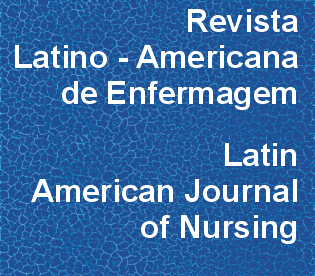Evaluation of the extract of Zeyheria tuberculosa with a view to products for wound healing
DOI:
https://doi.org/10.1590/0104-1169.3143.2385Abstract
OBJECTIVES: to evaluate the antimicrobial, cytotoxic and healing activities of the ethanolic extract of the stems of Z. tuberculosa via topical use and/or oral ingestion. METHOD: antimicrobial assays in vitro using the disk diffusion method, the Artemia salina toxicity test, and in vivo assays with Wistar rats. From these was collected clinical, histological and biochemical data for evaluating the healing process. RESULTS: in vitro antimicrobial testing showed activity in relation to Streptococcus pyogenes, Staphylococcus aureus and Staphylococcus epidermidis, with zones of inhibition of 18, 14 and 10 mm, respectively. The best minimum inhibitory concentration was 62.5 µg/ml for S. aureus, this bacteria being chosen for the in vitro assays. Animals treated with the ointments with the extract of Z. tuberculosa showed the best results in the reduction of the wound diameter, data confirmed by the presence of re-epithelialization in the histological samples. CONCLUSION: the extract was shown to be promising for the continuation of studies which may identify the active ingredients responsible for the pharmacological activity and its mechanism of action in the process of wound healing, so as to develop a product which may be used as an alternate means in the repair of infected cutaneous wounds.Downloads
Downloads
Published
2014-01-01
Issue
Section
Original Articles
License
RLAE’s authorship concept is based on the substantial contribution by each of the individuals listed as authors, mainly in terms of conceiving and planning the research project, collecting or analyzing and interpreting data, writing and critical review. Indication of authors’ names under the article title is limited to six. If more, authors are listed on the online submission form under Acknowledgements. The possibility of including more than six authors will only be examined on multicenter studies, considering the explanations presented by the authors.Including names of authors whose contribution does not fit into the above criteria cannot be justified. Those names can be included in the Acknowledgements section.
Authors are fully responsible for the concepts disseminated in their manuscripts, which do not necessarily reflect the editors’ and editorial board’s opinion.
How to Cite
Evaluation of the extract of Zeyheria tuberculosa with a view to products for wound healing . (2014). Revista Latino-Americana De Enfermagem, 22(1), 165-172. https://doi.org/10.1590/0104-1169.3143.2385



